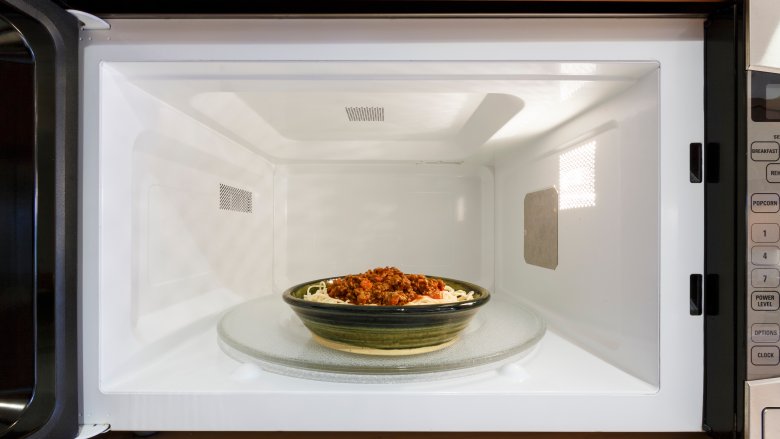We already know better than to nuke plastic—or heaven forbid, aluminum foil—but certain foods can become downright toxic when blasted in the microwave. Here’s what you need to know.
Think twice before tossing these foods in the microwave
Hard-boiled eggs
Shelled or unshelled, when a hard-boiled egg is cooked in a microwave, the moisture inside creates an extreme steam buildup, like a miniature pressure cooker, to the point where the egg can explode! Even scarier, the egg won’t burst inside the microwave while it’s being heated, but afterward—which means the scalding hot egg can erupt in your hand, on your plate or even in your mouth. To avoid turning your egg into a steam bomb, cut it into small pieces before reheating. Better yet, avoid putting it in the microwave altogether.
Processed meat
Processed meats often contain chemicals and preservatives that extend their shelf life. Unfortunately, microwaving them can make those substances worse for your health. In microwaving processed meats, we might unknowingly be exposed to chemical changes such as oxidized cholesterol in the process, according to research in the Journal of Agricultural and Food Chemistry.
Rice
According to the Food Standards Agency, microwaving rice can sometimes lead to food poisoning. The issue with rice involves the common presence of a highly resistant bacteria called Bacillus cereus. Heat kills this bacteria, but it can have produced spores that are toxic—and surprisingly heat resistant—according to findings in the International Journal of Food Microbiology. A number of studies confirm that once rice comes out of the microwave and is left out at room temperature, any spores it contains can multiply and cause food poisoning if you eat it. (The humid environment of warm leftover rice makes it an ideal breeding ground.)
Chicken
The most important thing to realize about microwaves is that their heat does not always kill bacteria, because microwaves heat from the outside in instead of the inside out. As such, certain bacteria-prone reheated foods will have higher risk of causing sickness when these bacterial cells survive. Bearing this in mind, you can see why chicken, which is at risk of salmonella contamination, could be a dangerous food to microwave.
Before eating chicken, you have to cook it thoroughly to eliminate all present bacteria. Since microwaves don’t fully or evenly cook all parts of the meat, you’re more likely to be left with surviving bacteria, such as salmonella. In one study, out of 30 participants who reheated raw meat, all 10 who used a microwave became ill, whereas the 20 who used a skillet were fine. This goes to show how much bacteria can survive in meat when microwaved, compared with other cooking methods. Here are some ways you could be shortening the life of your microwave.
Leafy greens
If you want to save your celery, kale or spinach to eat later as leftovers, plan to reheat them in a conventional oven rather than a microwave. When blasted in the microwave, naturally occurring nitrates (which are very good for you on their own) may convert to nitrosamines, which can be carcinogenic, studies show. Make sure you don’t ignore these microwave problems.
Beets
The same chemical conversion that happens to spinach holds true for reheating nitrate-rich beets and turnips! Good thing they’re just as delicious cold.
Fruit
Microwaved grapes won’t make raisins, but they will make plasma, which is a form of matter that’s created when gas is ionized and lets electricity flow. In a video, Stephen Bosi, PhD, physics lecturer at the University of New England, shows that nuking two pieces of a plain ol’ grape in a microwave can create enough plasma to melt a hole through a plastic container. Plasma might not be produced from other fruits, but you could still be left with a mess. Whole fruit traps steam under the flesh, meaning it could burst while it’s heating.
Potatoes
The danger comes when you try reheating cooked potatoes. Cooking potatoes in aluminum foil protects the bacteria C, botulin from the heat, meaning it can still thrive if the potato stays at room temperature too long and potentially cause botulism. Popping that contaminated tot in the microwave won’t kill the bacteria, either, so play it safe by cooking them on a baking sheet instead of wrapped in foil and refrigerating leftover potatoes as soon as possible.
Courtesy: Reader’s Digest










